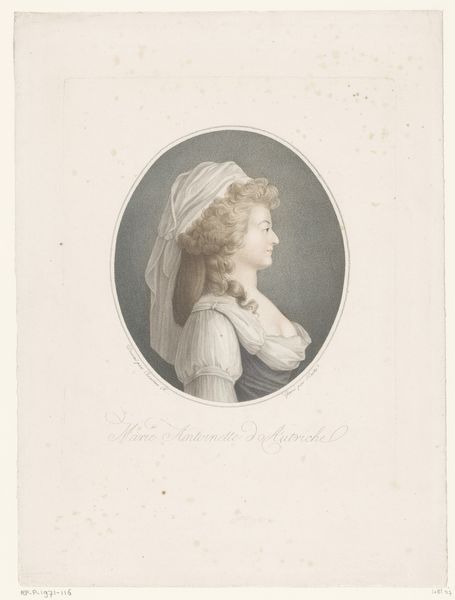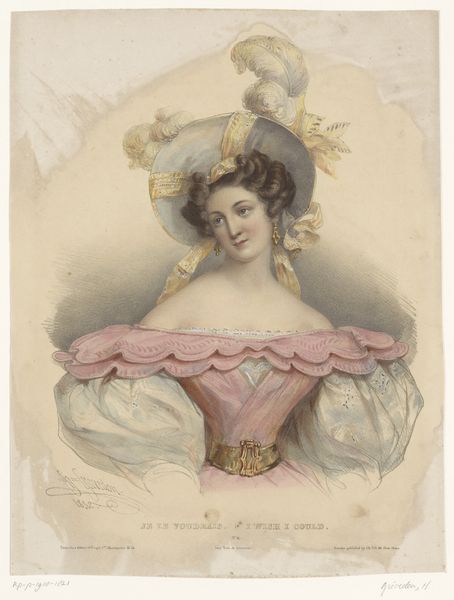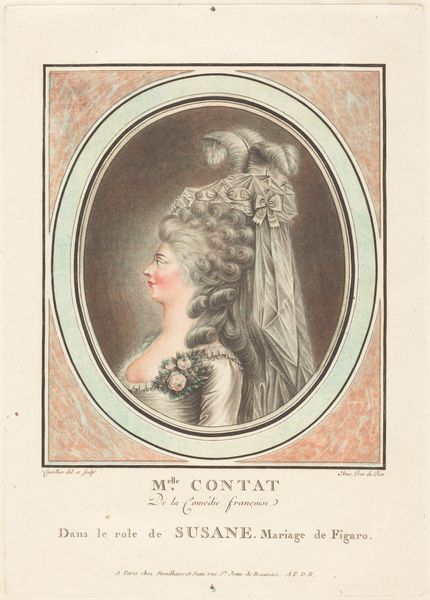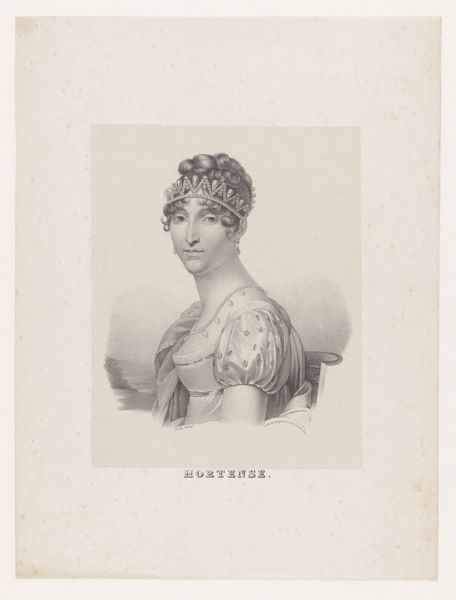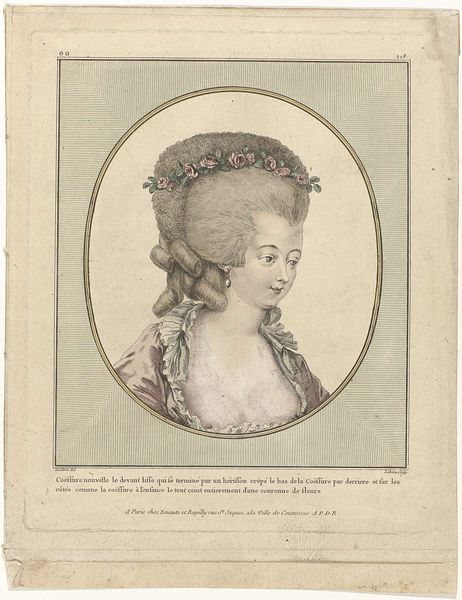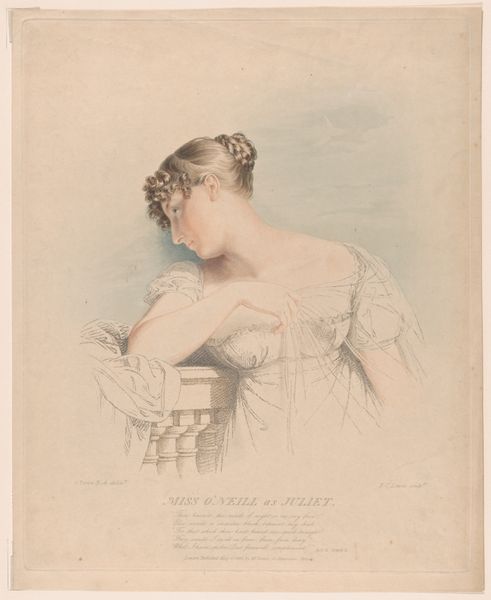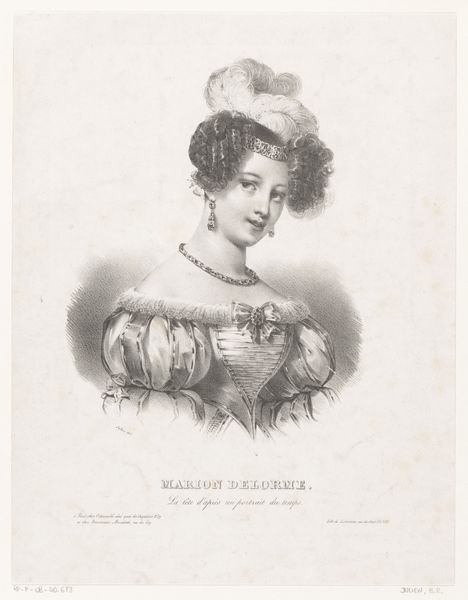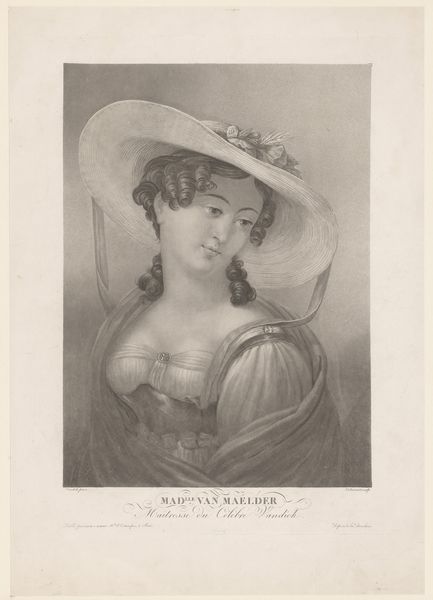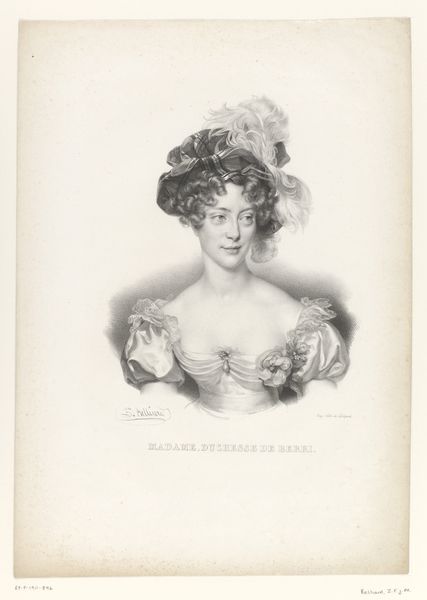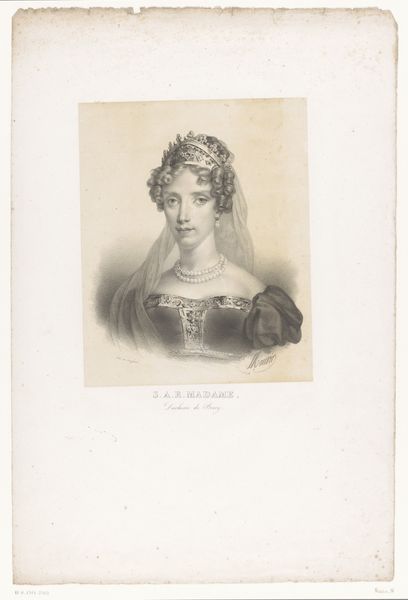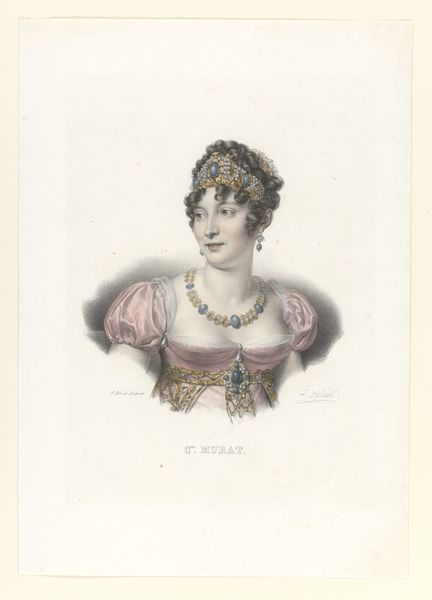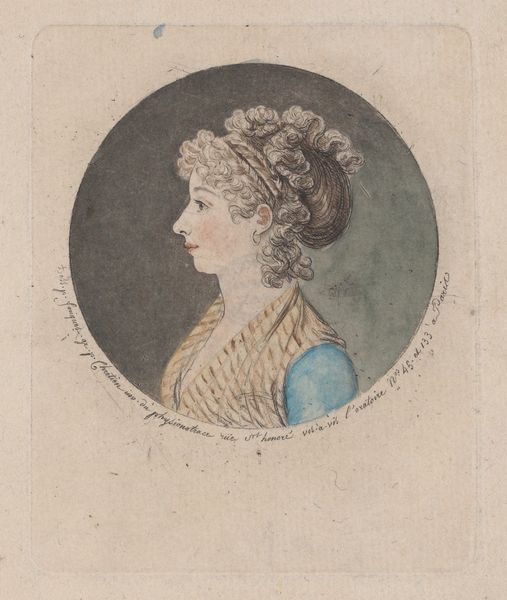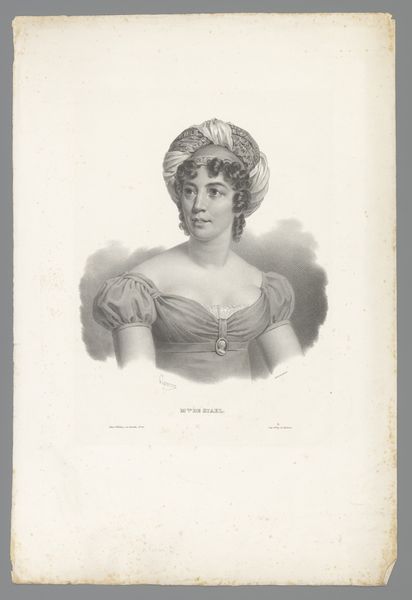
print, engraving
#
portrait
# print
#
engraving
#
miniature
#
rococo
Copyright: National Gallery of Art: CC0 1.0
Curator: The subject of this engraved print is identified as Mademoiselle Maillard, and the artist listed is F. Coutellier. Immediately, I'm drawn to the meticulous line work. Look how each strand of hair is individually articulated. Editor: It strikes me as wonderfully theatrical. The coiffure practically defies gravity, doesn't it? Such soft washes of color—the rosy cheeks and delicate folds of her gown are particularly charming. Is it explicitly from the Rococo period? Curator: The visual cues are indeed highly indicative of the Rococo style, echoing similar themes of luxury, artifice, and elaborate ornamentation. Consider its cultural moment, it's worth examining the significance of female portraiture within that social landscape. The miniature format suggests it might have served a specific function as a token of status. Editor: Precisely. A piece to display wealth. I'm curious about this association with "l'Academie Royale de Musique", as inscribed here. Did Mademoiselle Maillard belong to it or somehow associated to them? What influence did her association have to do with the print work itself, as we can perceive her importance through the art made for her. Curator: Absolutely. Understanding Mademoiselle Maillard's position offers a window into patronage networks and the role of women in the arts during that era. This piece could speak volumes about the politics of artistic representation and social standing, through semiotic interpretation. Editor: Right, without knowledge of who she was it could just be considered to be just some art of pretty people, rather than social and economic class division. A stark visual emblem. The contrast between her visible flesh and towering hair adds to that impact of elegance. A demonstration of how one visually presents oneself affects its contextual analysis of time. Curator: Well, on one hand, you have the historical framework to interpret her art through the societal roles imposed on this society. However, if you detach yourself from society's structure for even one brief moment, you'll find more of an individual's presence to see a completely new identity. It seems we could continue forever debating about art analysis in history, shall we move on? Editor: Indeed, the print certainly offers different meanings through a variety of perspectives.
Comments
No comments
Be the first to comment and join the conversation on the ultimate creative platform.
